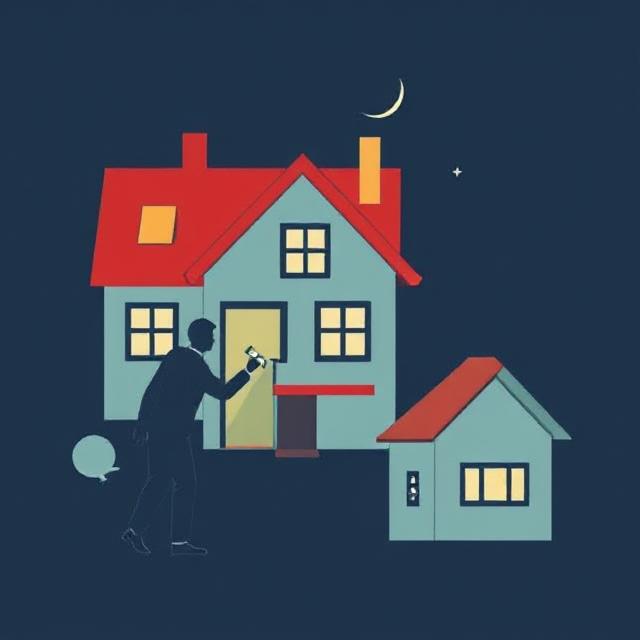House flipping is the process of buying a property at a low price, renovating or upgrading it, and then reselling it at a profit. While the concept has been popularized globally through real estate TV shows, it’s becoming increasingly relevant in Kenya—especially in emerging towns and satellite estates around Nairobi.
In areas with growing demand for affordable housing and improved infrastructure, flipping homes presents a smart, short-term investment opportunity. Investors typically focus on undervalued or neglected properties—often in need of structural or cosmetic repair—and resell them in better condition for a higher return.
Why House Flipping Is Gaining Popularity in Kenya
With rising property prices in prime Nairobi neighborhoods, more investors are shifting their focus to towns like Kitengela, Ruiru, and Utawala. Here, the costs of acquisition are lower, infrastructure is expanding, and demand for housing remains high.
Flipping has become especially popular among young professionals who start by purchasing affordable plots and building basic homes. Others acquire older homes in areas undergoing urban renewal and convert them into modern family houses or Airbnb-ready units.
With just one successful flip, you can double your capital—especially if you apply the Fixer‑Upper Formula to analyze location, ROI, and renovation costs before committing.
Finding the Right Properties to Flip
Not every cheap home is worth flipping. You want properties that are:
- Structurally sound (or repairable at a reasonable cost)
- Located in growing areas with rising property demand
- Close to schools, roads, hospitals, and malls
- Not burdened by legal disputes or unclear title deeds
Some of the best flips come from neglected and abandoned houses for sale. These properties may have been vacant for years but sit on valuable land, near key amenities, or in zones marked for urban expansion.
The trick is to buy low, add meaningful improvements (like a cavity wall upgrade or new roofing), and then resell quickly before market demand softens.
Where to Flip in Kenya: Hot Zones for Growth
Successful flips rely heavily on location. Here’s where to look:
📍 Syokimau & Athi River
Driven by the SGR and Nairobi Expressway, these areas offer excellent access and affordable pricing.
📍 Utawala
A favorite for first-time buyers and middle-class families. Investors are already flipping renovated homes here with upgrades like tile finishes, modern lighting, and open-plan kitchens.
📍 Ruiru & Juja
These towns have seen steady growth thanks to their proximity to Thika Superhighway and Kenyatta University. Demand is strong, especially among students and young professionals.
To find the best flip zones, ask yourself what makes a town good for real estate investment. Look for infrastructure, zoning potential, and signs of demand like new schools and supermarkets.
The Flipping Process Step-by-Step
Step 1: Budget
Use the 70% rule—buy and renovate for 70% of the after-sale value. Factor in stamp duty, legal fees, taxes, and repairs.
Step 2: Site Visit and Survey
Never buy without visiting. Assess the structure, plumbing, drainage, and wall condition. In older homes, upgrade to cavity wall systems to increase appeal and reduce heat retention.
Step 3: Legal Checks
Engage a lawyer to verify title deed, encumbrances, and previous ownership. This is critical when dealing with older or inherited properties.
Step 4: Renovate
Prioritize kitchens, bathrooms, and front elevation. A well-renovated facade can raise perceived value by 20–30%.
Step 5: Price & Sell
Study the local market, including listings like houses for sale in Kenya, to benchmark your pricing. Use social media, realtors, and property platforms to market the flip.
Mistakes to Avoid When Flipping Houses in Kenya
- Overestimating resale value: Don’t assume high profits without checking local price trends.
- Ignoring drainage and utilities: Buyers want working water, electricity, and sewer systems.
- Skipping permits: Even renovations require local authority approval.
- Not researching the neighborhood: Avoid properties in declining or saturated markets.
Avoiding these pitfalls is why many investors start with smart urban housing models that align with government planning and offer long-term demand.
Is House Flipping Right for You?
Flipping is ideal if you:
- Have short-term capital
- Understand construction and property pricing
- Can manage or supervise contractors
- Are comfortable with risk and market shifts
It’s not recommended for buyers looking for passive income or those unfamiliar with real estate legalities in Kenya.
How to Boost ROI in Your Flip
Want to make more on your next flip? Try:
- Installing solar lighting or water tanks
- Adding secure fencing and gates
- Painting with neutral colors
- Landscaping (grass + gravel + flower beds)
- Marketing with high-quality images and virtual tours
Many flips increase in value when you unlock the full potential of the land, especially when there’s enough space for a servant’s quarter, carport, or future expansion.
Flipping vs Renting: What’s Better?
Flipping offers immediate returns but carries risk. Renting offers long-term income but requires property management.
Some smart investors do both—buy, flip, and rent until they find a buyer. Others use the profit from one flip to build rental units on their affordable plots.
Final Word: Flip Smart, Not Fast
Flipping isn’t just about slapping on new paint and selling high. It’s a calculated process that involves choosing the right location, improving property value, and timing the market just right.
When done right, house flipping in Kenya can help you build capital quickly and reinvest in bigger real estate deals—especially if you follow proven strategies and case studies from the local market.

